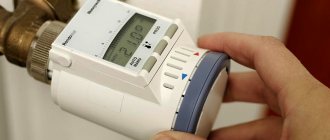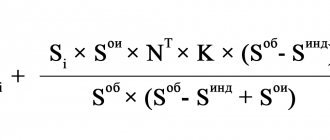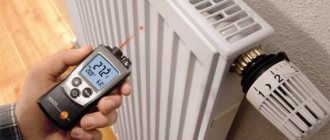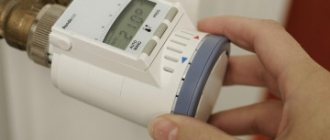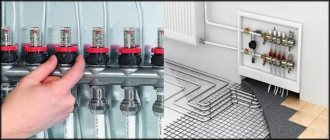Instructions for installing communal metering devices
Until January 1, 2022 (for the Republic of Crimea), all houses must be equipped with communal metering devices. Who is obliged to install them, who will pay for them and, finally, what awaits those who do not comply with the requirements of the law?
For those residents who have not had time to understand the essence of the upcoming innovations provided for by Federal Law No. 261, we are publishing the most common questions and answers to them.
Is the installation of a common house meter mandatory?
Yes, installation of a common house meter is mandatory. According to Federal Law No. 261, payments for energy resources, including water (Article 5, paragraph 2 of the law), must be carried out on the basis of data on their quantitative value, determined using metering devices. The law clearly defines the deadlines for installing energy metering devices: homeowners are required to install a collective metering device before 07/01/12.
Your management company is obliged to notify homeowners about the need and conditions for installing collective metering devices, otherwise it faces a fine for failure to notify the owners.
Do owners of premises in an apartment building need to hold a general meeting to decide on the installation of metering devices?
Yes need. Before starting to organize resource accounting in the house, a collective decision of the owners, adopted by a majority of votes at a general meeting, is necessary.
Who will pay for the purchase and installation of a common house meter?
Since the future metering device will become common property, payment for equipment and work will be entirely distributed among all apartment owners. According to the law on energy saving (Article 13, Part 5), which controls all the nuances of the installation and operation of communal meters, it is the owners who are “ obligated to ensure that their homes are equipped with metering devices
used: water, natural gas, thermal energy, electrical energy, as well as putting installed metering devices into operation .”
This statement is also supported by the Housing Code (Article 158
): “The owner of premises in an apartment building
is obliged to bear the costs of maintaining the premises belonging to him, as well as to participate in the costs of maintaining common property
in an apartment building in proportion to his share in the common ownership of this property by paying a fee for the maintenance and repair of residential premises.”
What options exist for installing common house appliances?
Option 1: Residents independently decide to install a meter
This usually happens in HOAs or in houses with a strong House Council, when residents understand that the requirements of the law cannot be avoided anyway, and realize their benefits from installing a meter. In most cases, these are houses whose general condition is satisfactory, they do not require emergency major repairs of the water supply or electricity systems, and the house already has some money in its account. To do this, the residents of the house convene a meeting, and by a majority vote they make a decision - it must be raised. In this case, the house deducts money from the “current repairs” item.
There are cases (if there is not enough money in the house account), then the owners decide to raise funds for installing a meter in addition to the main payments. In this case, it is also necessary to hold a general meeting and vote on the target fee. If the majority of owners agree, then everyone will have to pay, even those who voted “against”
Residents entrust the HOA or Management Company to implement their decision.
Option 2: The meter is installed at the suggestion of the Management Company
If the residents of the house do not take the initiative to install a common house meter, then the Management Company is obliged to come up with such a proposal.
In accordance with Article 12, paragraph 7 of the Law “On Energy Saving,” the management company is obliged to “regularly (at least once a year) develop and bring to the attention of the owners of premises in an apartment building proposals for energy saving and energy efficiency improvement measures that can be carried out in an apartment building, indicating the costs of their implementation, the amount of expected reduction in energy resources used and the payback period for the proposed measures.”
The management company should facilitate a meeting at which residents will either support the decision to install a meter or refuse it.
As for payment, residents will traditionally be offered to use the money under the heading “routine repairs” or organize additional fundraising. As a rule, management companies offer residents to install a meter in installments.
Option 3: The meter is installed by resource supply organizations
If by 01/01/2019 a common house meter has not been installed, then the companies that supply light, water and heat to our homes will take over. The law obliges them (Article 13, paragraph 9) to “carry out activities related to the installation, replacement, and operation of metering devices
of the energy resources used, the supply or transmission of which they carry out.”
Resource supply organizations will send all management companies and homeowners associations an agreement in which they will offer a metering device suitable for each specific home and will install the meter themselves. Residents and the service organization, for their part, are obliged to provide such a company with access to basements, networks and other objects of common property.
Residents will again have to pay for the metering device - they can pay in installments for up to 5 years. Interest is also added to the total cost of the equipment. Fortunately, by law they should not exceed the refinancing rate of the Central Bank of the Russian Federation in effect on the day of accrual. The owners will no longer be able to refuse the “services” offered. If they do not want to voluntarily pay for the meter and installation costs, utility providers will recover this money through the courts. The law will be on their side.
What penalties are provided for those who ignore the law on the mandatory installation of metering devices?
Legislators foresaw that not all residents would rush to comply with the requirements of the law on energy conservation to install communal meters, so they immediately made changes to the Administrative Code (added Article 9.16), which provided for fines and punishments for those who do not have time to acquire meters on time.
1. Owners are required to pay for the metering device and the costs of the resource supplying organization for its installation. Refusal will result in legal action.
In this case, the owner who loses the claim will also have to pay the company’s costs for legal services.
Art. 13 clause 12 of the law on “Energy Saving”: “In case of refusal to pay expenses on a voluntary basis, a person who has not fulfilled the obligation to equip these facilities with meters for the energy resources used within the prescribed period must also pay the expenses incurred by these organizations in connection with the need for forced collection."
Operating principle of a heat meter
The heat meter has a wide range of functionality. It allows you to determine the period of operation of devices, which is indicated on a specific metering unit. Also indicates the temperature of the coolant. But the main thing is to record the amount of heat energy consumed.
The heat meter circuit includes:
- Thermal converters – temperature sensors;
- Calculator – calculates the amount of heat spent;
- Power supplies;
- Flow meter is a sensor for calculating volume.
A heat meter is used to record the received heat that comes with the coolant. The amount of energy used by the device per hour is determined, and the temperature of the liquid at the inlet and outlet and into the system is taken into account. This is how the temperature difference over a certain time is determined. For this purpose, a special computer is provided in the meter.
The required data is supplied through flow and temperature sensors. One temperature sensor must be installed in the supply pipe of the system, and the second in the outgoing pipe. The computer analyzes the received data and displays the exact consumption figure on the screen.
Calculation of tariffs for services in public places
Public places include the following:
- Basement.
- Entrance.
- Flights and landings.
- All kinds of storage rooms.
If we are talking about communal apartments, which are still found, then areas such as the bathroom, kitchen and corridor are added to this list. In other words, this is absolutely any place where all owners living nearby have access.
Such objects, as you know, are lit and heated, and payments are distributed to all owners. Calculations for such “public” services are carried out according to a special formula with such indicators as:
- C (general) – payment for the service provided in public places.
- P – parameters of common house appliances.
- T – tariff for services relevant for a certain region.
- C (ind) – payment for each resident according to individual meters.
The calculation formula looks like this: the volume of the resource provided is divided by the volume of consumed, recorded in the installed meters.
The result calculated during the calculation process in kilowatts or cubic meters is translated into a monetary amount that must be paid by all residents. It is divided among all owners of residential premises.
Types of heat meters: which one is better to choose
Before installing a heating meter for an apartment building, you should familiarize yourself in detail with its main characteristics and operating principle. Today there are several types of heat meters, among which are:
- Mechanical meters are currently considered the cheapest and simplest. The basic principle of operation of these devices is to convert the translational movements of the coolant into the movement of a special measuring system. Typically, turbine, screw and vane types of mechanical heat meters are distinguished. It should also be noted that such devices are strictly not recommended for use with hard water - this can lead to clogging of the device with scale and other sedimentary substances. In this case, the best option would be to use a special filter for water purification.
- Electromagnetic meters operate on the principle of the generation of electric current as a result of the passage of an electronic carrier through a magnetic field.
- Vortex heat metering devices operate on the principle of detecting and analyzing vortex that appears directly in the path of coolant movement. It should be noted that this type of meter reacts negatively to the presence of significant impurities in the coolant, as well as to sudden changes in temperature and air in the lines.
- Ultrasonic heat meters are currently among the most accurate and efficient. The operating principle of this type of metering device is based on the passage of a special sound signal through the coolant, as well as the indicator of the time during which the coolant arrives from the primary source to the ultrasonic signal receiver.
Procedure for replacing and checking meters
Public appliances can easily be classified as standard public property, owned by all residents. It is for this reason that responsibility for all manipulations rests with the entire team. Inspection of such devices is carried out not by the owners, but by employees of the management company who have special qualifications.
Standard meter maintenance involves performing the following operations:
- Thorough inspection of the ODPU.
- Repair processes when damage, wear or breakdown of the entire device or its parts is detected.
- Checking and reconciling the displayed numbers with the real ones.
Based on the results of the inspection, a special act is drawn up. It is signed by two parties, where one is an employee of the management company, who acts on behalf of the owners, and the other party is the person who carried out the inspection.
The act must reflect the reasons for deviations from predetermined indicators, as well as methods for eliminating them. It specifies who is responsible for correcting the violations found.
If the installed devices are equipped with a special automatic system, the company that provides the services is required to pay for this. Devices of this type are usually installed by suppliers at their own expense. Residents should not interfere with this process.

